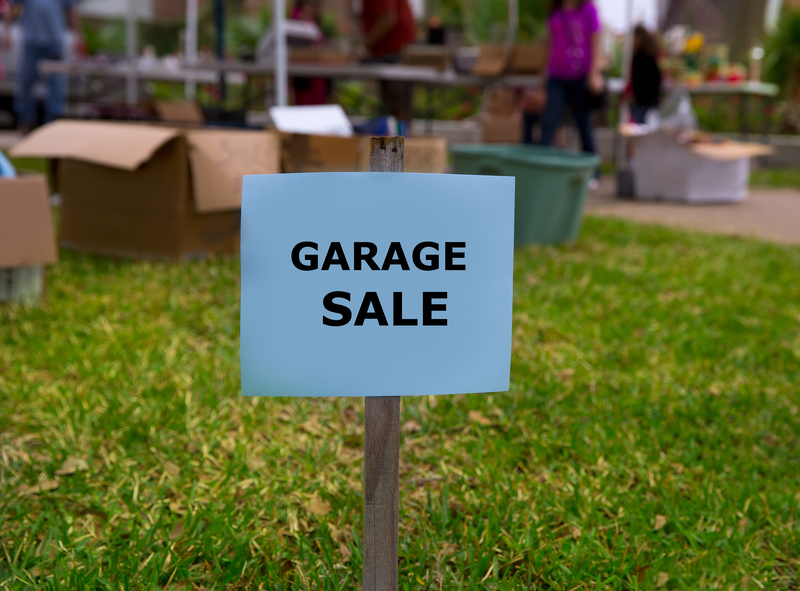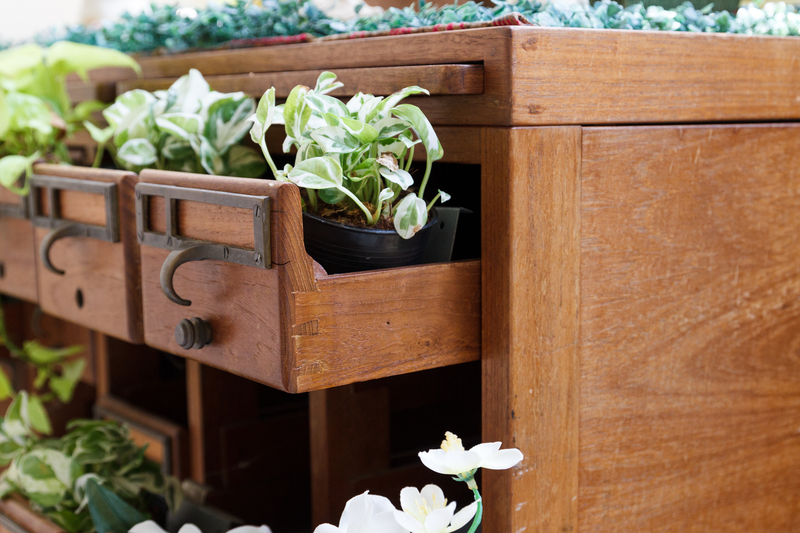Working Green: Elevate Your Office with Waste Reduction
Posted on 19/09/2025
Working Green: Elevate Your Office with Waste Reduction
Modern businesses are rapidly embracing sustainability, and working green is no longer an option--it's a necessity. By focusing on waste reduction in the office, companies can promote environmental consciousness, save money, and foster a positive workplace culture. In this comprehensive guide, we'll walk you through actionable steps and creative strategies to elevate your office with effective waste reduction, ensuring you're not only helping the planet but also boosting productivity and morale.
Why Reducing Office Waste Matters
Multiplying Impacts of Office Waste
Each year, millions of tons of office waste end up in landfills, contributing to greenhouse gas emissions and resource depletion. From disposable coffee cups to mountains of paper, these habits don't just harm the environment--they also hurt your company's bottom line and public image. Transitioning to green office solutions and targeting waste reduction can substantially lower operational costs and enhance your brand's reputation.

Key Benefits of Working Green in the Office
- Cost Savings: Waste reduction initiatives often lead to lower purchasing and disposal costs.
- Environmental Responsibility: Cutting down on waste conserves resources and decreases your carbon footprint.
- Enhanced Corporate Image: Eco-friendly practices attract clients, partners, and top talent committed to sustainability.
- Employee Engagement: Teams feel more motivated and proud to work for a forward-thinking company.
- Compliance and Certification Opportunities: Waste reduction efforts can help you meet green standards and obtain sustainability certifications.
Practical Steps to Reduce Office Waste
Let's explore how you can implement a robust waste reduction strategy and transform your workplace into a hub of sustainability.
1. Conduct a Waste Audit
Before you can reduce waste, you need to understand its sources. A waste audit involves analyzing the types and quantities of waste produced by your office. Identify recurrent items--such as single-use plastics, paper, or packaging--to spot quick wins and track progress over time.
- Sort and weigh waste from key areas: kitchens, meeting rooms, print stations, and desks.
- Document common sources and create a baseline report.
- Set measurable goals--like decreasing paper waste by 30% within six months.
2. Digitalize Office Processes
Paper is one of the largest waste streams in traditional offices. Moving to digital alternatives not only conserves resources but also enhances organizational efficiency.
- Adopt Cloud Storage: Store documents electronically to reduce printing.
- Implement E-signatures: Switch to digital signing processes for contracts and approvals.
- Opt for Digital Communication: Use messaging apps and emails instead of printed memos.
- Streamline Meeting Notes: Create shared digital notebooks and encourage their use.
Tip: Set up default double-sided printing and encourage "think before you print" policies for necessary physical documents.
3. Rethink Office Supplies
Switching to eco-friendly office products has a big impact on working green initiatives.
- Choose Recycled Paper: Select office paper made from post-consumer waste.
- Buy in Bulk: Purchase items in larger quantities to minimize packaging waste.
- Encourage Reusable Items: Provide staff with personalized mugs, cutlery, and water bottles.
- Eliminate Single-Use Plastics: Remove disposable cups, plates, and utensils from communal kitchens.
4. Set Up Effective Recycling Stations
Accessible and well-labeled recycling stations promote proper disposal of waste streams.
- Clearly Label Bins: Use visual cues and signage to distinguish recycling, compost, and trash bins.
- Educate Teams: Periodically remind staff about correct sorting procedures through workshops or infographics.
- Track Participation: Monitor bin usage and provide feedback to encourage continuous improvement.
5. Composting in the Office
Food waste is a significant contributor to landfill mass. Setting up a composting station in the pantry, break room, or kitchen helps divert organic materials and creates nutrient-rich soil.
- Partner with local composting services for regular pickups.
- Encourage employees to compost leftovers, coffee grounds, and fruit peels.
- Use clear guidelines to prevent contamination with non-compostables.
Advanced Waste Reduction Ideas for Offices
6. Host Green Initiatives and Challenges
- Green Days: Designate specific days where the office operates entirely paperless or avoids single-use items.
- Waste Reduction Contests: Reward teams or departments that achieve the largest decrease in waste production.
- Zero-Waste Events: Promote sustainable catering and reusable decor for company gatherings.
Peer competition and recognition can make working green more engaging and impactful for your staff!
7. Partner with Green Vendors
- Source Responsibly: Opt for suppliers who use minimal or recyclable packaging.
- Select Sustainable Brands: Choose eco-conscious cleaners, tech equipment, and food vendors.
- Support Local: Reduce transportation emissions by buying from nearby businesses.
Supplier partnerships can dramatically decrease upstream and downstream waste associated with office operations.
8. Redesign Your Office Layout with Sustainability in Mind
Small changes to your workspace can further aid office waste reduction efforts.
- Create Centralized Recycling Points: Place bins in convenient, high-traffic areas.
- Install Efficient Lighting: Use LED bulbs and motion sensors to cut energy and e-waste.
- Furnish Sustainably: Buy refurbished or upcycled furniture instead of new pieces.
9. Educate and Involve Your Team
The best waste reduction plans involve every employee at every level. Training workshops, newsletters, and visible reminders ensure ongoing commitment to working green.
- Start an office "Green Team" to lead sustainability initiatives.
- Host lunch-and-learns on topics like recycling techniques and upcycling crafts.
- Invite feedback and seek suggestions for continuous improvement.
Measuring and Celebrating Success
Track Metrics and Share Results
Regular measurement is essential for continuous improvement in office waste reduction:
- Monitor waste output before and after implementing new strategies.
- Publish monthly sustainability reports to celebrate milestones with your team.
- Recognize staff contributions--public appreciation helps reinforce a culture of sustainability.
*Tip: Celebrate big wins! Host team lunches or give awards when overarching waste reduction goals are reached. This keeps spirits high and the momentum going.*
Real-World Examples: Companies Excelling at Working Green
To inspire your journey, here are some organizations that have successfully elevated their offices through comprehensive waste reduction:
- Google: The tech giant pushes working green boundaries with waste tracking, large-scale composting, and reusable service ware across global offices.
- Salesforce: With their "Zero Waste to Landfill" commitment, they prioritize recycling, composting, and innovative office layouts that minimize waste streams.
- Patagonia: Office culture here revolves around repurposing, sharing, and promoting minimalism, empowering employees to think green every day.
These examples demonstrate that whether you are a startup or a multinational corporation, making sustainable shifts is both impactful and attainable.
Common Challenges and How to Overcome Them
- Lack of Awareness: Start with education sessions and visible communication to foster a green office mindset.
- Inconsistent Participation: Use incentives, friendly competitions, and simple processes to boost involvement.
- Recycling Contamination: Improve bin labeling and schedule periodic check-ups to ensure clean, sorted streams.
- Initial Costs: Remember that many working green initiatives, like energy-efficient lighting or bulk purchasing, pay off in the long run with cost savings.

Future-Proofing Your Office Waste Strategy
- Stay Updated: Discover new technologies and trends in green office practices, from AI-powered waste tracking to smart recycling bins.
- Scale Up: Expand your efforts beyond office walls--host community cleanups or support remote employees with waste reduction toolkits.
- Set Annual Goals: Keep energy high with yearly targets, whether it's a "plastic-free" pledge or expanding composting programs.
To elevate your office and fully embrace a culture of sustainability, regular evaluation and adaptation are crucial. Never stop challenging your team to innovate and lead in waste reduction efforts.
Conclusion: Every Green Step Counts
Adopting sustainable, working green habits in the office isn't just about environmental stewardship--it's also about fostering a workplace that thrives on innovation, responsibility, and unity. Whether you start with a simple recycling station or undertake a full digital transformation, every initiative supports a healthier planet and a more resilient, trusted business.
Begin your office waste reduction journey today and discover how small, intentional changes can yield lasting benefits. Remember, sustainable progress is built one choice at a time. The future of work is green--elevate your office, reduce waste, and lead by example!









